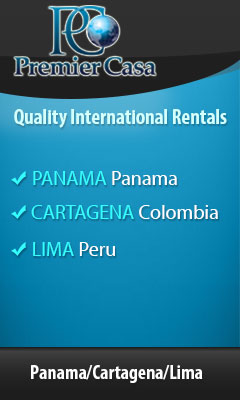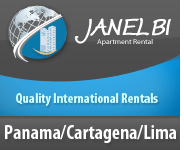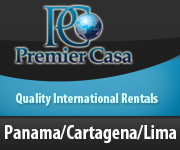By Bus
There are two kinds of buses in Panama. The ones you find on the highway, and "city buses". The highway buses are constantly making journeys from terminals in Panama city to different destinations along the Pan American Highway, and back to the terminal. They're pretty frequent, and the buses will pick you up or drop you off at any point along their route, and most of them are air conditioned. The roughly linear shape of the country makes it ideal for a bus system, so ideal in fact that you don't really need to rent a car to get around most areas. Take a bus to the intersection on the Pan American highway that you want. You can get on a bus any place on the Pan American highway going towards Panama City, but all trips originating from within the city require a ticket. The Grand Terminal in the city is large and modern, and will remind you of an American shopping mall or airport (it actually is a shopping mall, Albrook Mall, too). Schedules for all Panama are listed in http://horariodebuses.com/pa/
If you want to get on a bus, stand by the side of the road, hold you out your arm and make obvious pointing motions toward the ground. If you're on the bus and want to get off, yell "parada!" or tell the driver in advance. You'll get the hang of it pretty quick. The locals are very helpful with tourists on buses, and may offer help.
The highway buses are very cheap, count on a fare of about US$1 per hour traveled, sometimes less. One exception is fares from Tocumen airport.
City buses are different in which is call "Diablos Rojos" or "Red Devils" They are crowded, decoratively painted school buses, often without air conditioning, with a flat rate of 25 cents to any location in Panama City. They can be fun to take a couple of times, but once you've done it, best to take a taxi, which won't be that much more expensive anyway. They definitely have a particular style apart from other Central American countries. They look as if a bunch of 60's hippies decided to drive as far south as they could go in school buses, and when they could go no further, they stopped and started a bus company. If you like Salsa Music, you'll be happy as a clam on these buses.
However the government regulated public bus system utilizing modern air-conditioned buses called MetroBus. The panamanians and foreigner people will have to buy the "Metrobus Card" to get on the bus and pay the flat rate that costs $2.00 (the metrobus card) and then it can be recharged from $0.50 until $50.00 with a flat rate of $0.25 cents until all the "Diablos Rojos" dissappeared and then the new flat rate will be $0.45 cents from that moment.
For more information about the bus transportation system, including the routes, prices and sale points visit http://www.mibus.com.pa/rutas/
By Metro
By Taxi
For information about specific taxis cost go to http://www.transito.gob.pa/tablas-tarifa-de-taxis
By Car
Panama is in the south of Central America and can easily be discovered independently. The road system of Panama is in very good condition (for Central and South American standards). You can rent a car and drive it around the country if you are an excellent defensive driver. While traveling by car you can discover attractionswhich are hardly or even not to reach by public transportation.
Panama City is more difficult to navigate than any big city in the United States for example, with terrible traffic jams at rush hours, few signs for names of streets, poor street design, and a lack of traffic lights at busy intersections. You must be aggressive about positioning your car to get anywhere, yet highly alert to erratic and irrational behavior by others. Drivers have little respect for or even knowledge of traffic laws, and drivers from North America or Western Europe will be stunned by their recklessness. In the rest of the country, driving is mostly stress-free.
The Pan American Highway is paved for the entire length of the country, and has many roads which branch off to towns off the highway, most of which are paved, and most of the rest are still easily navigable in a sedan. However, road engineering standards are low, so be on the lookout for off camber turns, deep potholes, and sharp turns with no warning. It is highly recommended to drive well informed about your route. On the road, don't forget to take also a good road map with you.
For driving in Panama you need the driver's license of your country. The traffic rules are almost the same as in Europe or the U.S. Road signs are frequent. The speed limits are 40 km/h within cities, 80 km/h outside and 100 km/h on the highways. You will find gas stations all over Panama. A lot of stations are open around the clock. You get gas of three types: unleaded, super and diesel.
By Plane
Local airlines serve many airports in Panama. AirPanama and Copa Airlines are the local companies. Flights leave Panama City from Marcos Gelabert Airport in Albrook and you can book your fly through http://www.flyairpanama.com/ or http://www.copaair.com/sites/pa/es/pages/homepage.aspx
Booking private aircraft charters are available through online and local companies.
It is advisable to check the tail number of any aircraft chartered in Panama. All registered aircraft authorized for public charter work (air taxi) will have a letters after their numeric tail number (e.g. HP-0000TD). This signifies the aircraft is insured for charter work and is subjected to more inspections and increased maintenance requirements.
By Boat
Now the company Ferry Xpress is offering a ferry from Panamá to Cartagena and vice versa.The boats leave from the Port in Colon City, Paseo Gorgas.The office in Colón is open since 8:00 a.m. For more information you can call to +507 380-0909 in Panamá and 018000-423700 in Colombia or you can book your trip in www.ferryxpress.com
Store your luggage in trusted shops & hotels near you Luggage Storage






